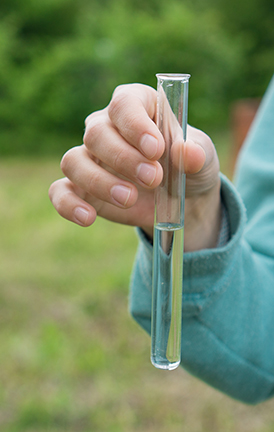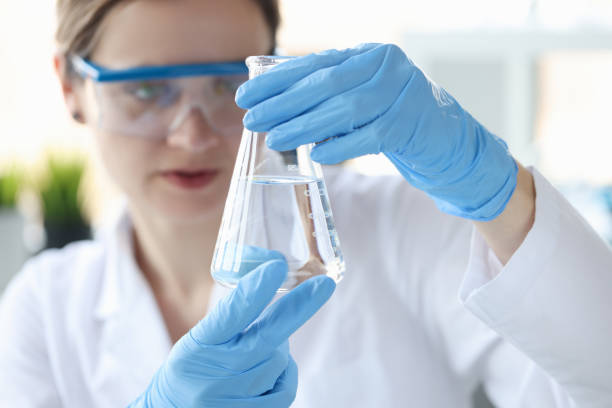Why You Should Choose Our Water Testing Service for Your Home
Why You Should Choose Our Water Testing Service for Your Home
Blog Article
Discover What Is Included in Water Testing and Exactly How It Makes Certain Safe Drinking Water
Comprehending the details of water testing is crucial in ensuring the quality and safety and security of our drinking water. Via a careful examination of physical, chemical, and microbiological elements, water screening identifies potential pollutants that might posture wellness threats. From the visibility of hefty steels to dangerous microbes, each examination element plays a critical duty in keeping the integrity of our water supply. Advanced strategies like chromatography and spectrometry boost the precision of these analyses. Just how do these procedures equate into the regulatory structures that assure safety in our day-to-day consumption?
Trick Components of Water Testing
Water screening is a crucial process that includes several crucial components to ensure the safety and high quality of alcohol consumption water. One of the primary components is the assessment of physical qualities, including shade, odor, and turbidity. These characteristics can give preliminary insights right into the water's problem and potential contamination resources. In addition, making sure the pH equilibrium of water is crucial, as it affects the water's corrosiveness and the efficiency of disinfection procedures.
Another significant component involves microbiological evaluation, where water examples are checked out for the presence of microbes such as bacteria, viruses, and protozoa. If consumed, this evaluation is essential to identify biological threats that can posture wellness dangers. Furthermore, chemical evaluations are carried out to find not natural and organic compounds, such as heavy metals, nitrates, and chemicals, that could be existing in the water.

Finding Damaging Pollutants
Finding hazardous pollutants in alcohol consumption water is a basic facet of securing public health. Each type of pollutant presents distinct wellness threats, making their detection critical to ensure the water consumed by the public is risk-free.
Water testing for contaminants is typically carried out by regulatory agencies and water utilities, employing a mix of field sampling and research laboratory analysis. These analyses are designed to find both naturally taking place materials and anthropogenic contaminants that may have gone into the water with agricultural runoff, commercial discharge, or maturing infrastructure. Regular tracking is crucial, as contamination degrees can change due to ecological modifications, seasonal variants, or human activities.
The recognition of harmful impurities informs needed actions, such as water therapy interventions or public advisories, to minimize risks. Early discovery is essential to stop adverse wellness results, varying from gastrointestinal illnesses to long-lasting problems like cancer cells, therefore ensuring the proceeded safety and security of drinking water.

Chemical Analysis Techniques
In the realm of ensuring risk-free alcohol consumption water, chemical analysis techniques play a crucial duty in identifying and quantifying pollutants. These techniques are vital for spotting a large range of chemical materials, consisting of heavy metals, chemicals, and industrial contaminants, which can pose significant wellness dangers. Strategies such as atomic absorption spectroscopy (AAS) and inductively combined plasma mass spectrometry (ICP-MS) are generally utilized to measure trace levels of steels like arsenic, lead, and mercury. These tools supply exact quantification, helping with compliance with governing standards.
Gas chromatography-mass spectrometry (GC-MS) is an additional critical technique, especially for organic compounds. It divides complicated blends and recognizes unstable and semi-volatile organic substances, making sure that contaminants like benzene and toluene are within risk-free restrictions. High-performance liquid chromatography (HPLC) is in a similar way utilized for non-volatile materials, consisting of certain chemicals and drugs.
Ion chromatography is utilized to determine concentrations of anions and cations, such as nitrates and sulfates, which are essential in analyzing water quality. These chemical analysis strategies collectively guarantee that drinking water stays safe by finding discrepancies use this link from established purity norms, thus guarding public health. Guaranteeing precision and precision in these examinations is critical to maintaining the honesty of water security evaluations.
Microbiological Testing Techniques
Precise microbiological useful site testing is critical for guarding public health and wellness by making certain that drinking water is devoid of hazardous virus. This procedure entails identifying and specifying microbes such as microorganisms, viruses, and protozoa that may pollute water supplies. Common virus consist of Escherichia coli, Giardia, and Cryptosporidium, each posturing significant wellness risks.
A number of methods are used in microbiological testing to determine these hazards. The membrane layer filtering method is regularly utilized, involving water travelling through a filter that records germs, which are then cultured to determine their existence and focus. Alternatively, the multiple-tube fermentation technique allows the quantification of coliform bacteria making use of a series of dilution and incubation steps.
Developments in innovation have presented molecular methods such as polymerase chain response (PCR), which allows for the extremely specific and rapid discovery of pathogens by intensifying their genetic material. Enzyme-linked immunosorbent assays (ELISA) also provide an approach to detect pathogens by identifying particular healthy proteins or antigens.
These varied approaches are crucial for comprehensive water quality analysis, guaranteeing that water treatment procedures work which circulation systems keep safety and this post security. By using these microbiological testing methods, potential wellness threats can be determined and minimized quickly.

Significance for Public Health And Wellness
Making sure the microbiological security of alcohol consumption water directly impacts public health and wellness by preventing the spread of waterborne conditions. Pathogens such as germs, infections, and protozoa can bring about diseases like cholera, dysentery, and stomach infections (Water Tesing Services Tampa). The execution of thorough water screening protocols is paramount in recognizing and alleviating these threats, hence safeguarding communities from possible outbreaks
Regular water testing not only detects microbial impurities but likewise evaluates chemical and physical parameters that could influence health and wellness. For example, excessive levels of nitrates or heavy steels such as lead can pose serious health and wellness threats, specifically to prone populaces like babies and expectant females. By recognizing these risks early, water screening enables prompt interventions, making sure the water supply remains within safe usage criteria.
Moreover, water screening plays a critical role in preserving public confidence in local water systems. It offers transparency and accountability, comforting the general public that their wellness is a top priority. For policy manufacturers and health and wellness authorities, the data acquired from water screening educates choices on framework financial investments and public health methods, ensuring sources are guided where they are most required. By doing this, water testing is crucial in advertising a much healthier, more secure society.
Conclusion
Water testing offers as a crucial mechanism for making certain the security and high quality of drinking water through extensive examination of its physical, chemical, and microbiological buildings. By detecting harmful impurities, such as hefty steels and pesticides, and utilizing sophisticated strategies like chromatography and spectrometry, water screening helps with the identification of prospective wellness dangers. The implementation of strenuous testing methods is vital for maintaining compliance with safety requirements, eventually safeguarding public wellness and enhancing self-confidence in municipal water systems.

By determining these threats early, water screening enables prompt interventions, guaranteeing the water supply remains within risk-free usage requirements.
Water testing offers as a crucial device for making certain the safety and top quality of alcohol consumption water through thorough examination of its physical, chemical, and microbiological residential or commercial properties.
Report this page